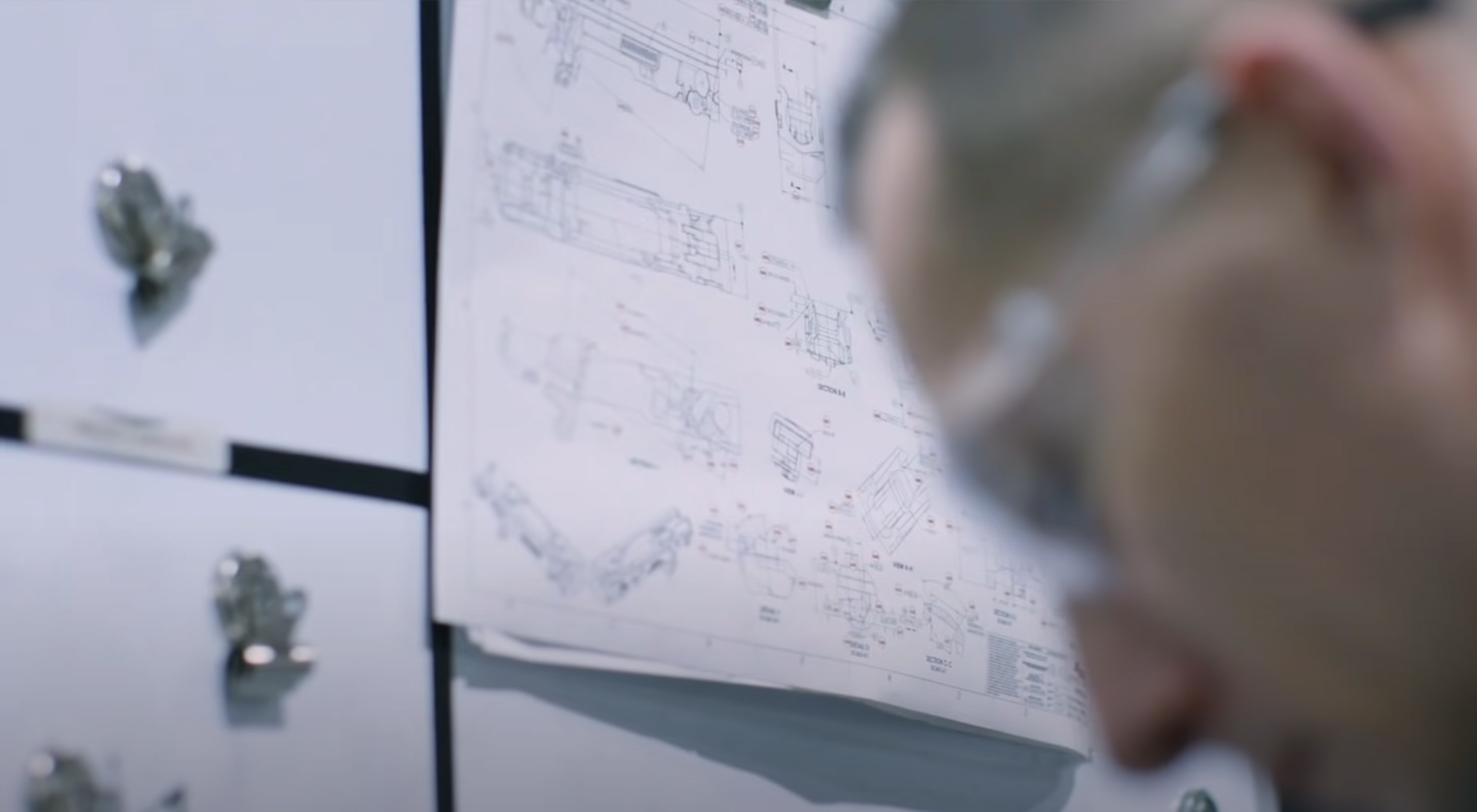The Objective: The SIG-MMG 338 Program - Conception to Reality (Part I)
This two-part series (in conjunction with The Objective Series) details the journey of SIG SAUER’s machine gun development effort that began with the SIG-MMG 338 for U.S. SOCOM’s LMG-M program, transitioned to the U.S. Army’s Next Generation Squad Weapons program, and is now returning to its roots.
Partnered Content by Rob Curtis/RECOIL Magazine
In 2017, U.S. Special Operations Command (SOCOM) challenged industry to provide potential solutions that could fill the gap between its current man-portable, medium machine gun—the 7.62 NATO M240B/L, capable of effectively engaging targets up to 800 meters away, and its 84-plus-pound sibling—the 50 BMG M2A, that reaches past 1,800 meters.
The gap between these two machine guns had left the command’s maneuver units unable to provide standoff or deal with threats between 800 and 1,800 meters without relying on the stationary or vehicle mounted M2A. SOCOM needed a man-portable machine gun that operators could carry and use to assault and defend against distant targets as they took and held ground.
DEFINING THE CAPABILITY GAP
The concept of a lightweight medium machine gun began to take shape during the war in Afghanistan. American units tasked with holding ground in remote, sometimes bowl-shaped terrain were attacked or harassed by infiltrating enemies who came over the top of mountains surrounding their positions. The effective enemy plunging fire was difficult to respond to with the relatively short-ranged 7.62 NATO round of the M240.


A 2005 view of Combat Outpost Keating on the Pakistan-Afghanistan border in a remote pocket of Afghanistan known as Nuristan. Soldiers stationed here said being at COP Keating was like being in a fishbowl or fighting from the bottom of a paper cup. (U.S. Army photo by 1st Lt. Brad Larson/Released)
This tactic is illustrated in the 2009 battle of COP Keating, where the outpost was overrun, and eight soldiers and four Afghan allies were killed by Taliban fighters attacking from the high, steep mountainsides surrounding the base. The enemy recognized that the Americans' best means of fighting back (at least until air support could come on station) was with their longer ranged .50 caliber M2A machine guns. The attackers massed fire on the emplaced guns and gun trucks, taking them out of the fight in the early stages of their attack.
FILLING THE GAP
By 2016, the problematic capability gap between America’s medium and heavy machine guns was well defined and the solution was identified in the form of the 338 Norma Magnum (338 NM) caliber cartridge. The 338 NM cartridge provides triple the ballistic performance of a 7.62 NATO cartridge fired from an M240B. Its performance is closer to that of the 50 BMG, but at less than half the weight and size of the .50 cal. round, and when carrying a machine gun, weight is paramount.
In 2017, with the procurement process only in the ideation phase, SOCOM hosted an industry day and invited interested vendors to submit their ideas and designs for a lightweight medium machine gun (SOCOM used the nomenclature “LWMMG” at the time). Instead of stating hard requirements for the vendors’ systems to meet, SOCOM offered general performance goals and capabilities in an effort to give industry wide latitude in its response. However, SOCOM did have a few sticking points that were non-negotiable including weight, dimensions, and caliber, which provided the vendors a hint of the weapon it thought would fit its needs. What they were asking for was a sub-24-pound, belt-fed, 338 NM-chambered machine gun with suppressed and unsuppressed, quick-change, 24-inch barrels, a rate of fire from 500 to 600 rounds per minute (RPM), and an area target range of 2,000 meters.
The challenge piqued the interest of the SIG SAUER defense team and engineers, and thus the SIG Machine Gun program came into existence; the program, in its infancy, was founded with the mission to fill the U.S. machine gun capability gap with a SIG-designed and built machine gun chambered in 338 NM. Ron Cohen, CEO, had always envisioned that SIG SAUER would evolve to become the premier provider of small arms to the U.S. military with the crown jewel of that suite of weapons being a machine gun. This was that opportunity.
The company assessed its capabilities, marshaled its forces, and assembled a dedicated machine gun design team that would eventually number 25 members within its engineering efforts and Special Weapons Group (SWG).
START LIGHT
Between 2017 and 2018, SIG developed its very first machine gun, a lightweight medium machine gun prototype it called the SIG-Medium Machine Gun 338 (SIG-MMG 338).
The traditional approach in building a lightweight machine gun is to build a reliably working prototype, then shave weight wherever possible in ways that the gun is still able to meet its performance and reliability objectives. The challenge with this approach is that the lightest version of the gun remains elusive, as engineers, by practice, tend to be cautious and will leave meat on the bone for fear of compromising reliability.


The SIG SAUER Defense Strategies Group began work on its SIG-MMG 338 in 2017. (SIG SAUER)
“While this method would produce a light gun,” says SIG Defense Strategy Group’s (DSG) Senior Director of Strategic Defense Products, Jason St. John, “it won’t produce the lightest gun and the directive was to design the lightest gun, so to be successful we had to buck convention, which quite honestly is what we do at SIG.”
To achieve this, SIG’s engineers worked in reverse. They focused on building the lightest operational gun they could and testing it to discover the points of failure. Failed parts were redesigned and when material was added, it was done so strategically to ensure the weapon remained as light as possible.
In this early engineering stage, each redesigned component was developed nearly independently of the other parts around it. Then, with each of the improved parts combined into a working prototype, the “Franken-gun” was tested, and its parts were further tweaked for reliability. This process played out over a couple of iterations until the first prototype SIG-MMG 338 was completed in 2018. This first prototype produced the absolute lightest functioning medium machine gun that weighed under 21 pounds with a 50-85 mean rounds between stoppages (MRBS). While the weight was ideal, the MRBS still had a ways to go before it was ready for combat.
RISKS AND COMPETING INTERESTS
At this point, there was still no contract issued or even a hard-lined requirement statement from SOCOM. The SIG-MMG 338 program remained an elusive vision, but that didn’t matter to SIG’s Cohen. The decision to invest significant resources in R&D, personnel, and facilities to support the program without a clear design goal, or, let alone, a firmly committed customer, was not about the contract, it was bigger than that, it was about ensuring future capabilities for our warfighters.
But, in late-2017 a very interesting opportunity revealed itself that would change military small arms forever. While SIG was in the middle of developing its first SIG-MMG 338 prototype, the U.S. Army issued the requirements for its Next Generation Squad Weapon (NGSW) submissions. The decision for SIG to compete in the NGSW program was instantaneous, and with the resources already in place to develop the SIG-MMG 338, SIG was poised to deliver. The machine gun program had a new mission, and the resources were shifted from the quickly maturing SIG-MMG 338 program to the effort to build a small caliber machine gun for the Army program.
While this meant that progress on the SIG-MMG 338 would temporarily slow, all the progress and development from this point gave the company a head start in the development of the SIG Lightweight Machine Gun 6.8 (SIG-LMG 6.8), that would compete for years against the industry giants in this category, and ultimately prevail and become the NGSW XM250, the official replacement for the U.S. Army’s 5.56 NATO-chambered M249 SAW.
Compare Products
Items